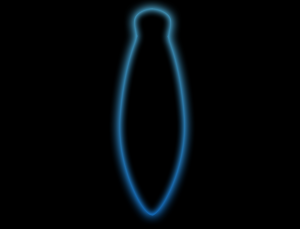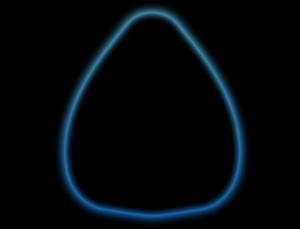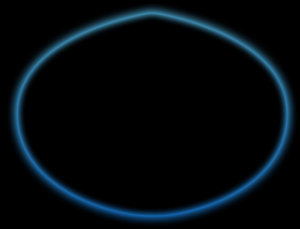Waveguide Technology
Our revolutionary Waveguide lighting technology is unique. We shine the light sideways into a solid, cast acrylic rod and reflect it out. There is no secondary optic, eliminating one of the biggest causes of dissatisfaction with current LED products – our simple approach delivers significant benefits.
Human-Centric Benefits
- Superior colour definition and CRI
- Zero colour distortion regardless of beam angle
- Precise placement of light eliminating unwanted spill
- Significantly reduced UGR
- Very low flicker (3%)
Efficiency and Reliability
This design also allows the LED to be driven at significantly lower drive currents than traditional LED fixtures, some of the benefits of which are:
- Extremely effective lumen output and efficacy
- Reduced heat
- Significantly increased longevity and reliability
The result of under-running the LED’s capacity (<10%) and running the driver at optimal performance (96%), flicker in Waveguide Lighting is just 3% compared with >20% on most current LED fixtures.
Proven Advantages of Waveguide
Colour, Colour Shift and CRI
See below macadam ellipse chart. This shows “True” colour of the LED in CCT – the macadam ellipses show acceptable deviation from true colour, dependent upon what has been specified:
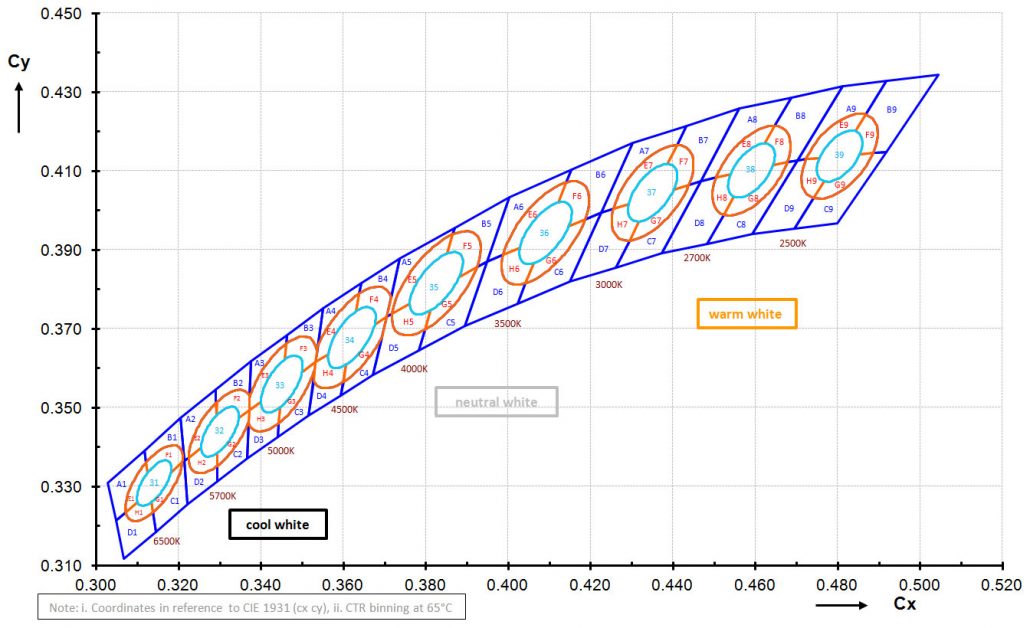
The below shows this translated into a CIE chart. If you extended the lines all the way across the chart, the colour would still be classed in the same colour temperature scale (measure in Kelvin) at any point on the line, whilst obviously varying significantly in true colour.
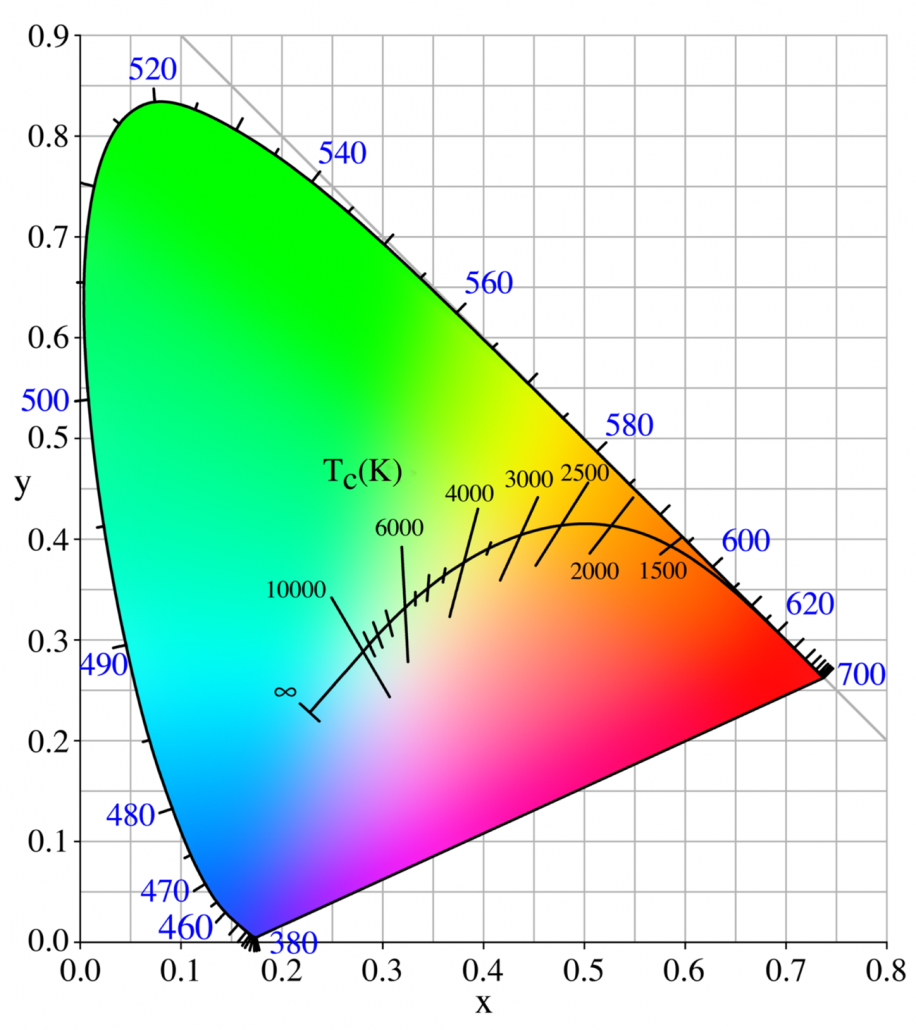
See below representations of CIE charts of various LED fixtures. Optimal measurements should be close together on the curve, which means the optics are not changing the colour from the LED and colour shift with angle is minimal. The greater the distance, the more the colour is being changed and the further the points apart, the more the colour and CRI changes by angle.
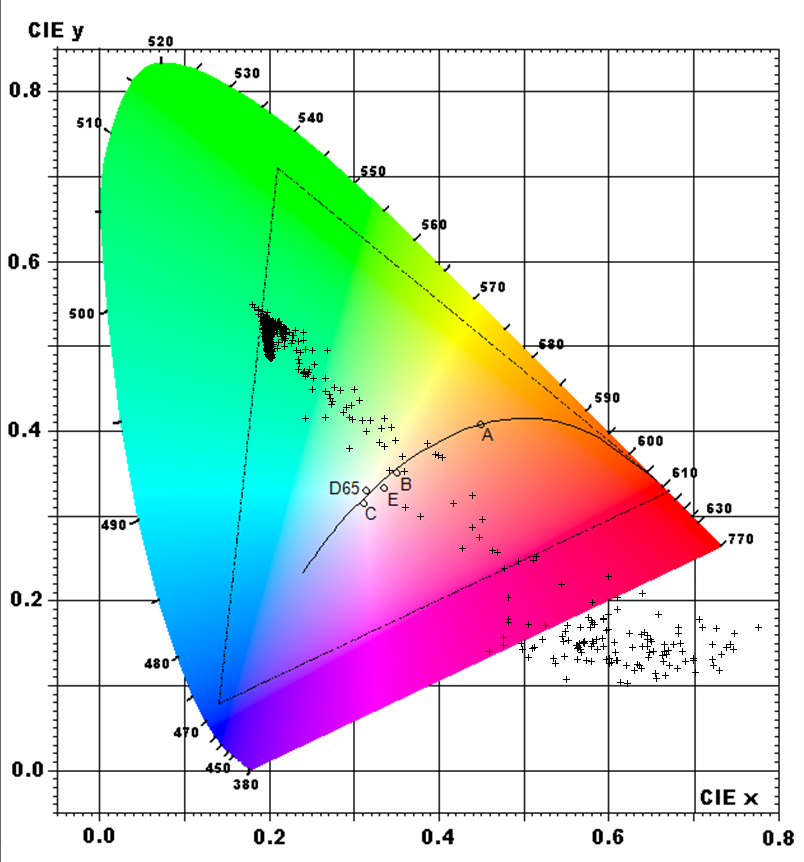
Typical LED 1
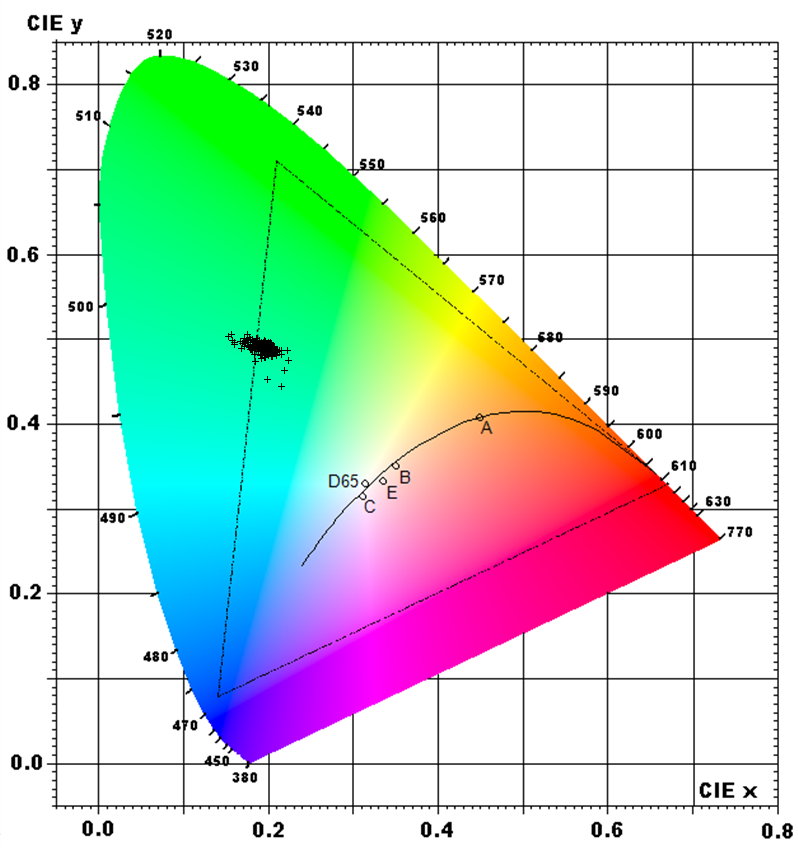
Typical LED 2
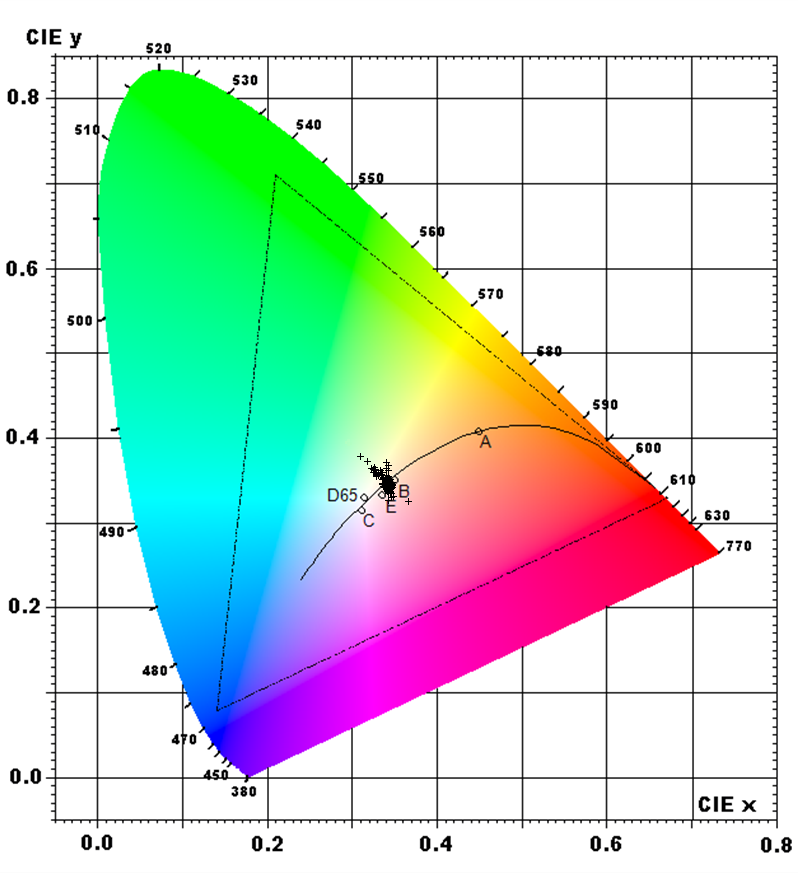
Waveguide
Colour shift with beam angle is a particular problem for LED tehnology using a secondary optic to scatter the light from the LED. It is not a problem with Waveguide as we mix the light within the rod before reflecting it out.
The reflector technology in our lighting system is as vital as the LED itself. The varying reflector widths and angles allow directions to be incremented in as little as 6° steps. The light in the rod is internally refracted until being directed at precise beam angles by the reflector, achieving the highest levels of uniformity with ultra-low glare.


